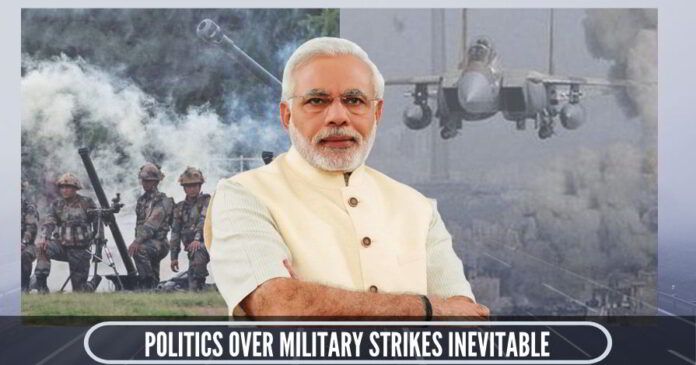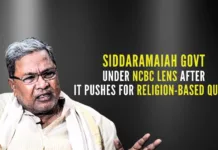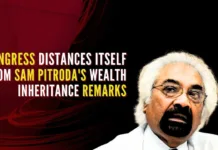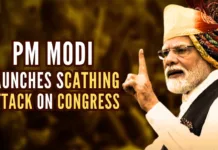
A great deal depends on how much traction the BJP and its allies are able to generate in the course of the election campaigning on the Modi government’s ‘new normal’ approach
It is now obvious that India’s devastating air strike into Pakistan will be one of the key narratives in the Lok Sabha election campaign. The politicisation, which has happened from all sides, was inevitable. Opposition parties are rattled that the Modi government’s robust counter to terrorism emanating from across the borders could result in major gains for the Bharatiya Janata Party-led NDA, which is why it has been trying to downplay the incident by raising issues of credibility. The BJP and its allies to recognise the potential, which is why their leaders are losing no occasion to drive home the advantage, in interface after public interface.
Vajpayee’s public image was decidedly burnished, just as Lal Bahadur Shastri’s had been post-1965 war. Unfortunately, Shastri did not live to relish his stardom
To what extent will the gains be, is unclear, and past indicators are not very helpful. India was humiliated in the 1962 war with China, and Prime Minister Jawaharlal Nehru suffered a serious loss of face, not least because many held him responsible for the catastrophe. And yet, the Congress government survived. Things were more cheerful in 1965 when India triumphed over Pakistan and the Congress regime basked in the glory. But only two years later, the party suffered major reverses in many States. The 1965 charm failed to work, with the party losing vote-share and seeing a dip in the number of seats it won. Clearly, other and more local issues were dominant in 1967, including the struggle of then Prime Minister Indira Gandhi for assertion within her party. The beginning of that dominance happened when she split the party and got rid of the ‘Syndicate’.
The 1971 war with Pakistan was a feather in the cap of India and Prime Minister Indira Gandhi. Not only did India reduce Pakistan to a pulp, but the conflict also led to the disintegration of Pakistan with the creation of Bangladesh. Indira Gandhi was hailed in unequivocal terms by even the opposition parties, and it appeared that she had truly become unbeatable. However, the reality turned out to be different. In three years from then, unrest began to grow in the country against the Congress, and various opposition leaders led by Jayaprakash Narayan raised a banner of revolt. The seemingly unassailable Indira Gandhi in the aftermath of the 1971 victory, found herself so insecure that she imposed a state of Internal Emergency in the entire country. When Lok Sabha elections were held in 1977, the people had forgotten the ‘Durga’ in her and ousted her and her party from power.
The BJP’s era at the Centre coincided with the outbreak of the Kargil conflict in mid-1999. Under the leadership of AP Vajpayee, India decisively beat back Pakistan’s misadventure on the Kargil heights. The party-led NDA came to power once more, after two short terms previously, but the electoral gains from Kargil were not significant since the number of seats it won were not very different from the earlier ones. But Vajpayee’s public image was decidedly burnished, just as Lal Bahadur Shastri’s had been post-1965 war. Unfortunately, Shastri did not live to relish his stardom.
Although the Congress lost credibility, it still won the Lok Sabha election held five months later and remained in power for five more years
If aggressive responses to enemy action have had mixed results for the parties in power, weak actions by regimes in such situations too have followed that trend. The Vajpayee regime had failed to offer a counter to the attack on Parliament in 2001 by Pakistan-based terror groups. It had been expected that Prime Minister Vajpayee, who not only led a muscular (on matters of nationalism) BJP but had also dared the world when India conducted substantive nuclear tests, would strike at Pakistan. He belied those expectations for a variety of reasons, including international pressure to demonstrate ‘restraint’. The BJP lost the 2004 Lok Sabha polls. It can be argued that the defeat was the result of other factors. That may be true, but only partially. Had the Vajpayee government responded forcefully, like the Modi government has, it could perhaps have had better results.
On the other hand, the Manmohan Singh regime escaped that fate. It too had abjectly failed to hit back after Pakistan-based terrorists entered Mumbai via the sea and caused a shooting spree over three days in the city. More than 150 persons lost their lives, including a few foreigners. The world was shocked and outraged, and there was immense anger in the country. Had the Congress-led UPA government then taken the fight right inside the Pakistan camp, it would have had the full support of all of India, and many other nations as well. But the then Prime Minister refused to act. Like in Vajpayee’s case, he too was influenced by the desire of major powers that India must not militarily respond. But, although the Congress lost credibility, it still won the Lok Sabha election held five months later and remained in power for five more years. Here again, there could be other reasons. One is the failure of the BJP, then in the opposition, to fully exploit the Congress’s timidness; Narendra Modi was nowhere in the national picture.
A great deal depends on how much traction the BJP and its allies are able to generate in the course of the election campaigning on the Modi government’s ‘new normal’ approach. Speaking of now, they have an edge, since the public perception is that the opposition parties, including the Congress, have conducted themselves irresponsibly on the issue.
Note:
1. The views expressed here are those of the author and do not necessarily represent or reflect the views of PGurus.











Third rate pot boiler plot put in guttersnipe language. Can’t you put the same ideas in readable and decent English? Makes Tom Clancy and Ludlum seem like children’s lit. Yes Sonia was a poisonous presence in Indian politics. Yes we had a spineless PM in MMS. Yes the Congress top brass tried to create a Hindu terror bogey. The real story behind 26/11, especially the Congress hand is yet to be revealed. Some day the truth will come out. All said, there are utter idiots in our country who don’t see through the Italian Congress games. Wake up Bharat!
Manmohan Singh did not offer any counter because
1. He is a known CIA-ISI pimp, a filthy Pakipanjabi Bhapa whose loyalties lie in Pakistan, from where he arrived as a begger..But has the Porkipanjabi DNA of the worst of Brit criminals and debauched white d..crazed pakipanjabi whores..
2. Manmohan was placed as slave in Chief by the Italian bardancer, because hsi Pakipanjabi white crazed daughter is “married”(whatever that means in Italian parlance) to a Italian American and is abject sewer cleaner of Italy
3. Italian Xtian Fuehrer or rather Madam Conquistador or Italian Madam Antonia Coartes Francis Xavier, “Harlot Rule”(Oh Popes are famous for it) was Vatican Inqusition-White Klannist rule and Opus Dei works vide ISI in India. ALL NATIONAL PLUNDER was routed to Vatican Banks vide ISI
4. 26/11 was a Insider Top Job (SOW-nia). Why terrorists were allowed to go on rampage for 3 days, when MARCOS are there right in Mumbai with Navy Western Command
5. Army Southern Command is based in Pune.It was a Attack on India Army could have reached in 14 mins, why it took 14 hrs just to call MARCOS
6. Why was Colonel Purohit arrested just 2 weeks before 26/11 and which Congi Top Politician Note filled car he caught?? Car going to supply terrorists …AND PLAN WAS TO KILL NARENDRA MODI
7. The other plan was to create a false narrative of Hindu Terror and hide the Christian terror under Italian Antonia. How and why Kasab allowed a NDTV BDESHI ISI thug BDUTT to picture him closely wearing Hindu religious symbols when he was shooting all. Hemant Karkare wt-al were following him closely to kill him. Had he died the Hindu terror conspiracy would have gained traction. Thanks the Bravery of Ombale he caught him alive in media limelight that Italian Vatican Xtian FASCIST sow-nia and Italian streetdogs Congis could not create a false narrative..MMS was very much part of it
8. Why Isreal had to threaten Direct Commando action, and ON HIGHEST UPS in India Govt, only after which the MARCOS swung into action… WHO WAS HIGHEST UP….ONLY THIS ITALIAN AND FAMILY
9. how is it that within 2 days the Book RSS ki Saazish came out?? Means that the Book was already written and everything planned
ALL POINT TO THE ITALIAN AND ITS PAKIPANJABI HARAMI SLAVE IN CHIEF HAND
10..THIS PROKIPANJABI SEWER FILTH OF PAK RELEASED THE MALEGAON-SAMJHAUTA TERRORISTS SILENTLY ON ITALIAN ORDERS, WHILE FALSELY ARRESTING COL PUROHIT, SADHAVI PRAGYA, SWAMY ASEEMANANDA (HIS ONLY FAULT THAT HE STOPPED ITALIAN XTIAN BIGOT IN HER TRACKS WHEN SHE WENT IN SUPPORT OF MISSIONARIES TO SHABARI KUMBH IN 2002…HAD SHE BEEN BEHEADEED OR DESKINNED THEN INDIA WOULD HAVE BEEN SAVED THE 10 YEARS BARBARIC XTIAN INQUISITION-WHITE KLANNIST RULE,,, BUT FOR COWARD VAJPAYEE)
ITS A WAR BETWEEN INDIAN NATIVES THE SANGHIS AND THE FOREIGN AND BASTARDS CREATED BY FOREIGNERS AND THEIR DEBAUCHED KEEPS..NO DOUBT ITALIAN IS SUPPORTED BY XTIAN-PORKIPANJABI AND BONG PITVIPERS…ONLY FASCISM IS THE SOLUTION